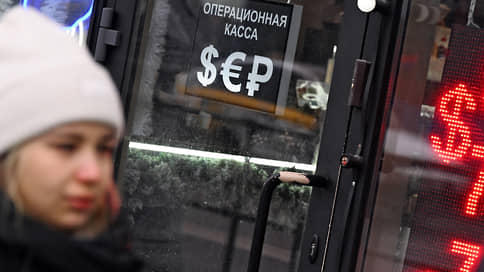Revenue did not come to the ruble – Newspaper Kommersant No. 23 (7468) dated 02/08/2023
[ad_1]

The exchange rate of the dollar after a month’s break exceeded the level of 71 rubles/$. This was facilitated by the strengthening of the American currency on the world market, as well as a decrease in sales of foreign exchange earnings on the Russian market due to the introduction of restrictive measures against Russian oil and oil products. The situation is only partially alleviated by the sale of the yuan by the Bank of Russia within the framework of the fiscal rule. Experts do not rule out a rise in the dollar rate this week to 72 rubles/$.
The American currency has been strengthening its position on the Russian market for the fifth day in a row. During trading on the Moscow Exchange on February 7, the dollar exchange rate rose to 71.25 rubles / $, the maximum since January 9. At the end of the day, it stopped at 71.15 rubles/$, which is 20 kopecks. higher than Monday. For five days, the dollar rose by 1.33 rubles. At the same time, the euro ended the auction with a decrease of 24 kopecks, to the level of 76.06 rubles/€. It’s only 11 kopecks. higher than a week ago.
This movement reflects the strengthening of the US currency on the world market. The DXY Index hit a four-week high on Tuesday, approaching 104, up 0.3% from Friday and 3% from last Thursday’s low, according to Investing.com. The euro exchange rate fell by 3.3% in less than four days, to $1.0669. This was facilitated by the publication of strong data on the US labor market for January. Last month, unemployment in the country fell to 3.4% from 3.5% in December, and the number of people employed in non-agricultural sectors of the economy increased by 517 thousand people, although analysts had expected an increase in the figure to only 185 thousand people. “Investors expect that strong economic statistics will allow the Fed to continue the cycle of tightening monetary policy,” explains Vladimir Evstifeev, head of the analytical department at Zenit Bank.
To weaken the Russian currency, there were also internal factors, including the introduction by the EU of restrictions on the price of oil products from the Russian Federation, which, combined with similar measures against Russian oil, lead to a reduction in the flow of foreign currency into the country.
This is evidenced by the preliminary estimate of the Ministry of Finance published on Monday regarding the execution of the federal budget, the deficit of which in January reached 1.7 trillion rubles. This was caused by both an increase in budget expenditures and a decrease in revenues, including due to a drop in oil and gas revenues. “The data on the execution of the Russian budget also indicate a decrease in the fundamental support of the ruble due to a reduction in foreign exchange inflows from exporters,” notes Vladimir Evstifeev.
The weakening of the ruble is somewhat constrained by daily sales of yuan within the budget rule, said Mikhail Vasilyev, chief analyst at Sovcombank. From February 7 to March 6, the Ministry of Finance plans to sell Chinese currency for more than 160 billion rubles. (about 9 billion rubles per day). This is almost three times the sales of the previous month. Despite such a significant increase in the sold currency, its share will be less than 15% of the daily trading volume in the yuan, and therefore can provide only limited support to the Russian currency.
Under the current conditions, the weakening of the ruble will continue, even despite the seasonality.
According to Mikhail Vasilyev, February is historically the most favorable month of the year for the ruble, also due to the seasonally strong current account of the Russian balance of payments. But this year, due to restrictive measures, a significant inflow of foreign currency to the local market is not expected.
According to Vladimir Evstifeev, by the end of the week the dollar will approach the level of 72 rubles/$ and 10.6 rubles/CNY. “If the decrease in the cost of raw materials on the world market is added to the reduction in export earnings caused by sanctions restrictions and the geopolitical discount, the ruble may accelerate the weakening with the immediate target at the dollar exchange rate of 75 rubles / $,” believes an expert in the stock market at BCS Mir Investments Dmitry Babin. The upcoming meeting of the Bank of Russia on Friday at the key rate, according to analysts, will not have a significant impact on the ruble exchange rate, as it is expected to remain at the current level of 7.5%.
[ad_2]
Source link





